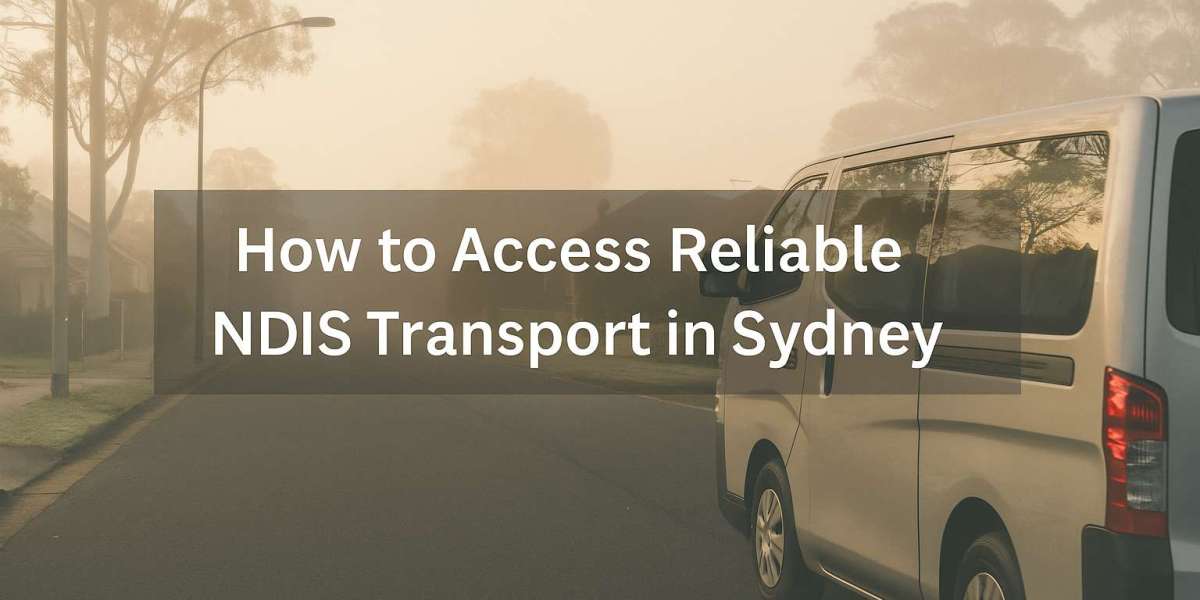Winter in Sydney means cooler mornings, shorter days, and the kind of damp weather that makes getting around more difficult, especially for people with disability. During this time, having dependable NDIS transport providers becomes a key part of maintaining independence. Travel isn't just about getting to appointments. It's about staying connected to community, work, and the supports that keep life running.
Whether you’re updating your plan or exploring new transport options, now is the right time to make sure your services are winter-ready and fit for your routine.
What is NDIS transport support, and how does it work?
Transport supports help people who are unable to use public transport due to disability. Depending on the individual’s plan, funding can take different forms to suit needs and daily life.
- Some receive a general travel allowance for getting around independently
- Others have transport included in their support worker’s role
- There are specialised vehicles for people with high mobility needs
- Frequency and distance of travel shape the type of support available
- Access depends on how transport supports your broader plan goals
For a better understanding of how this support is structured, the official guide to NDIS transport funding outlines key rules on claiming, provider roles, and budget allocation.
Why winter complicates transport access
The colder months can create serious transport challenges. While Sydney doesn’t deal with ice or snow, the change in weather still impacts daily routines and reliability.
- Rain and fog reduce visibility and slow traffic
- Damp weather affects ramps, footpaths, and mobility equipment
- More people get sick, affecting both participants and the availability
- Fatigue and joint pain can be worse in cold conditions
- Evening appointments are harder due to early sunsets
Some participants find they need more flexibility or different vehicle setups during winter. For example, needing extra time to board safely, or requiring enclosed vehicles with heating during early morning trips.
What to ask when evaluating your options
Choosing a provider is about more than just cost or location. During winter, it’s worth asking how services adapt to the season. The answers can help determine whether a provider can support you properly during cold, damp, or unpredictable weather.
- Do vehicles offer protection from rain and cold air?
- Are drivers trained in safe handling during wet-weather conditions?
- What happens if a regular driver is sick or delayed?
- Is rescheduling supported without penalty if you're unwell?
- Can pickups be adjusted to safer, better-lit locations in poor weather?
Many participants find that having the same driver for regular routes improves their comfort, especially when routines are affected by winter fatigue or pain.
Safety protocols and health considerations
Staying healthy during winter means thinking ahead. Transport providers should have clear safety measures in place, especially with increased respiratory illnesses during colder months.
- Vehicles should be cleaned frequently, and hand sanitisers should be available
- Drivers need to recognise when someone may require extra time or support
- Heating and enclosed cabins help reduce exposure to cold air
- Mobility aids should be stored securely to avoid slips or damage
- Routes should be chosen with weather and terrain in mind
Some participants benefit from discussing their specific medical needs in advance. This could include things like asthma management, reduced stamina, or needing extra time to get in and out of the vehicle.
Making trips smoother with practical winter planning
A bit of planning can help prevent many common issues. Preparing for travel in winter isn't just about comfort. It's also about ensuring each trip is safe and less stressful.
- Carry a small kit with medications, water, tissues, and gloves
- Dress in warm, layered clothing that’s easy to remove indoors
- Use waterproof covers for communication devices or paperwork
- Confirm appointments the day before, especially in unpredictable weather
- Aim for travel times that avoid low light and heavy traffic periods
Some participants prefer to explore different accessible transport options depending on the day. Having flexible services for both group and solo travel can be helpful, especially when conditions change quickly.
What about alternatives to registered providers?
Not every trip needs to be covered by a formal provider. In some areas, or during times of high demand, community-led and informal options fill gaps that registered services can’t always cover.
- Neighbourhood volunteers can assist with local errands or outings
- Local shuttle services sometimes operate on fixed routes
- Informal supports, like friends or neighbours, can step in when needed
- Some use lift-sharing with other participants attending the same event
- Weekend or off-peak trips may rely on family or non-funded support
These alternatives aren’t suitable for everyone, but for some, they create more freedom. Learning about broader systems of inclusive transport innovation can help participants understand what’s possible when traditional systems are unavailable or overstretched.
Things to review in your current NDIS plan
Support plans are often made at one point in time, but needs change, especially across seasons. Winter may bring new challenges that your current funding doesn’t quite meet.
- Check whether transport funding matches how often you travel now
- Talk to your coordinator about increased delays or cancellations
- Consider if your vehicle access needs have changed
- Review whether driver support and pickup options are still suitable
- Log issues to raise in your next plan meeting or budget review
A simple adjustment, like requesting travel during daylight hours or switching to a provider with backup drivers, can make a significant difference to your winter routine.
Conclusion: Independence during winter starts with the right transport
Winter shouldn’t get in the way of staying active, connected, or independent. With the right planning, realistic expectations, and a provider who understands seasonal challenges, it’s possible to continue life on your terms — even when the temperature drops.
By choosing reliable NDIS transport providers, preparing for common cold-weather issues, and exploring flexible or alternative transport options, participants can feel supported and in control throughout the season. The weather might shift, but access to your routine doesn't have to.


